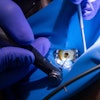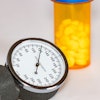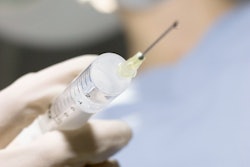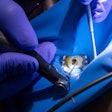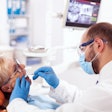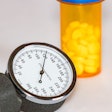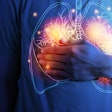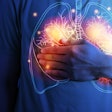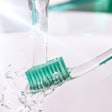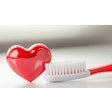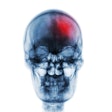
A local injection of lidocaine during dental treatment possibly induced a coronary artery spasm, potentially resulting in a 50-year-old man's heart attack, according to a case report published April 3 in the American Journal of the Medical Sciences.
This is believed to be the first reported case describing lidocaine as the potential direct cause of a coronary artery spasm, which likely led to the man's acute myocardial infarction, the authors wrote. The possible side effects of this common anesthetic require clinicians' attention, according to the report.
"We report a case of [acute myocardial infarction] secondary to a local injection of lidocaine, the potential mechanism of which may be lidocaine-induced coronary artery spasm," wrote the authors, led by Dr. Sen He, of the department of cardiology at Chengdu BOE Hospital in China.
A 50-year-old patient with chest distress
In March 2020, a man with no history of high blood pressure, diabetes, atrial fibrillation, or high cholesterol visited the dentist for a restoration. He was not a smoker and had no known drug or food allergies. In the past, the patient had undergone dental repair and denture implantation five times, according to the report.
At the March visit, the patient received one lidocaine injection, which consisted of 2 ml of lidocaine (2%) and 1 ml epinephrine (1:100,000), in his gingiva. About one minute later, he was given a second shot that contained 2 ml of lidocaine in his oral mucosa, the authors wrote.
Immediately after the second shot, the patient began experiencing chest distress and pain and shortness of breath, which lasted about 30 minutes with little relief, they wrote. Approximately three and a half hours after he received the first injection, the man went to the hospital.
An electrocardiogram showed significant wave changes, indicating a possible acute coronary syndrome. About two hours later, the man was transferred to the emergency department. However, the results of his coronary angiography were normal, He and colleagues wrote.
Echocardiography was performed immediately after the angiography exam, and it showed no noteworthy wall motion abnormality or valve abnormalities. Lab tests showed significantly elevated levels of cardiac troponin. He was tested for several viral infections, including SARS-CoV-2, influenza A and B, adenovirus, and respiratory syncytial virus, all of which were negative, according to the report.
On the day after the angiography, the patient's symptoms subsided considerably, and his ST waves returned to close to normal. The next day, a heart contrast-enhanced magnetic resonance imaging (MRI) scan showed no late gadolinium enhancement, the authors wrote.
After the angiography, the man was treated with diltiazem, clopidogrel, and potassium supplements. Five days after the man came to the hospital, he was discharged.
Since the man had symptoms of acute myocardial ischemia, new ischemic electrocardiographic changes, significantly elevated troponin levels, and a normal coronary angiography, he was diagnosed with suspected acute myocardial infarction caused by coronary artery spasm, the authors wrote.
After his discharge, the patient continued to take clopidogrel and diltiazem. At his two-month follow-up visit, the patient experienced no chest distress and pain or shortness of breath during regular daily activities, according to the report.
Connecting the dots
An important cause of acute myocardial infarction is coronary artery spasm, which can be induced by the side effects of certain drugs. In this case, the combination of the first and second injections may have driven the man's lidocaine blood concentration to rise rapidly to a threshold level. This inhibited coronary artery relaxation, which possibly led to coronary artery spasm and acute myocardial infarction, the authors wrote.
Since lidocaine is a widely used local anesthetic in clinical practice, further investigations are needed to better understand the potential role of lidocaine in coronary artery spasm, He and colleagues wrote.
"Strict, standardized operating procedures and medical observations are essential for the clinical application of lidocaine," the authors concluded.

